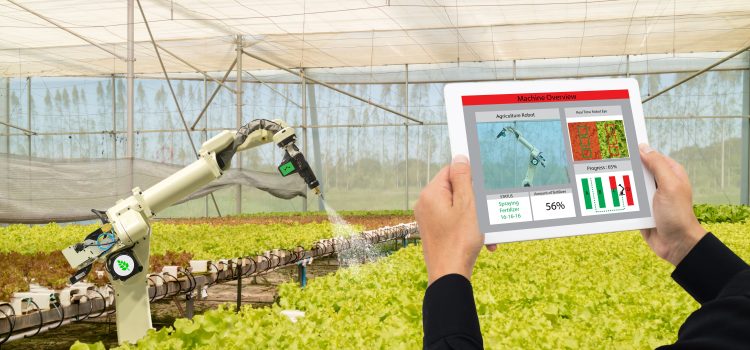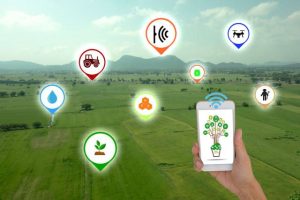
The State of FinTech Startups in 2024
The financial technology (FinTech) sector continues to evolve at a rapid pace, transforming how businesses, consumers, and entire industries approach financial services. Over the past decade, FinTech companies have disrupted traditional banking, lending, payments, investments, and insurance sectors. In 2024, this transformation continues, with emerging technologies, regulatory changes, and market shifts reshaping the landscape of financial services.
The rise of artificial intelligence (AI), blockchain, digital payments, green finance, and embedded finance are among the top drivers of innovation in the sector. FinTech startups, which have already brought significant changes to financial services, are now positioned to lead the next wave of disruption. This article delves into the latest trends and innovations within the FinTech ecosystem in 2024, highlighting the companies, technologies, and developments that are shaping the future of finance.
1. Klarna’s IPO: The Future of Buy Now, Pay Later (BNPL) Services

Klarna, one of the most well-known players in the Buy Now, Pay Later (BNPL) space, is preparing for an IPO in 2024. Klarna, based in Sweden, has revolutionized consumer credit by offering interest-free installment payments for purchases at various online retailers. As of 2024, Klarna’s valuation stands at approximately $15 billion, with millions of customers using the platform worldwide. Klarna’s IPO is a major milestone for the BNPL sector, as it is the first major BNPL company to go public.
Benefits of Klarna’s IPO:
- Increased Credibility: As a publicly listed company, Klarna is expected to gain more trust among consumers and investors. Its IPO will help strengthen its position in a rapidly growing market, especially in the U.S. and Europe.
- Expansion and Innovation: With access to public market funding, Klarna can accelerate its expansion plans and invest in new technologies. The BNPL model will likely evolve to include more diverse payment options, such as subscription services and financial planning tools for customers.
Example: Klarna has partnered with major retailers such as Nike, H&M, and Walmart to offer BNPL options, allowing consumers to break down large purchases into manageable installments. Klarna’s global reach and the growing acceptance of BNPL services indicate the company’s potential for even greater success post-IPO.
2. Regulatory Changes in Payment Apps: Stricter Oversight in 2024
With the increasing reliance on digital payment solutions like Venmo, PayPal, and Cash App, 2024 marks the year when these platforms will face stricter regulatory oversight. The U.S. Consumer Financial Protection Bureau (CFPB) has introduced new rules that will require these companies to operate under more stringent standards, similar to those imposed on traditional banks.
These regulations focus on areas such as fraud prevention, consumer protection, data privacy, and transparency in fees. Payment apps processing over 50 million transactions annually will need to comply with these new guidelines, which include more thorough monitoring, clearer terms for users, and enhanced security features.
Benefits of Increased Regulation:
- Better Consumer Protection: By ensuring that payment apps follow clearer rules, consumers can feel more confident about using digital payment services. New regulations will also address rising concerns about data privacy, identity theft, and unauthorized charges.
- Higher Security: Regulatory changes are designed to strengthen payment app security, particularly in areas like fraud detection, user identity verification, and dispute resolution.
Example: PayPal has already started to comply with these regulations by rolling out additional fraud protection and dispute resolution features for its Venmo service. This proactive approach helps PayPal maintain consumer trust amid increasing scrutiny from regulators.
3. Artificial Intelligence (AI) in FinTech: Automating Finance for Better Services

Artificial Intelligence (AI) is one of the most transformative technologies for FinTech startups in 2024. AI-powered applications are now integral to financial institutions, from banks and credit unions to insurance companies and investment firms. In the world of FinTech, AI is used for everything from personalized financial planning to fraud detection and customer service automation.
The rise of AI-driven platforms is changing the way financial services are delivered. Machine learning algorithms can now predict a consumer’s financial behavior, personalize their experience, and offer tailored solutions in real-time.
Benefits of AI Integration:
- Improved Efficiency and Accuracy: AI is helping companies process transactions faster, reduce human error, and automate back-office operations. For instance, customer service chatbots powered by AI provide quicker responses, while AI in fraud detection can spot suspicious activity faster than manual reviews.
- Personalized Services: FinTech companies can use AI to provide hyper-personalized financial recommendations. AI analyzes consumer behavior, preferences, and transaction history to offer tailored financial products, investment strategies, and credit options.
Example: One of the leading players in AI-powered personal finance is Wealthfront, which uses AI to manage users’ investment portfolios based on their risk tolerance and financial goals. Wealthfront’s robo-advisors are constantly learning from market conditions to optimize returns for clients.
4. Blockchain and Cryptocurrency in 2024: Revolutionizing Payments and Investments
Blockchain technology and cryptocurrency are continuing to disrupt the financial services industry in 2024. The decentralized nature of blockchain offers increased transparency, security, and reduced transaction costs, especially in cross-border payments. In 2024, blockchain’s potential for revolutionizing industries such as banking, insurance, and real estate is becoming more evident.
Benefits of Blockchain and Cryptocurrency:
- Faster and Cheaper Transactions: Blockchain eliminates intermediaries, reducing transaction fees for cross-border payments. It also allows for near-instantaneous transactions, which is especially beneficial in an increasingly globalized economy.
- Increased Transparency and Security: Blockchain offers a secure, transparent ledger where all transactions are recorded and cannot be altered. This reduces the risk of fraud and provides greater accountability.
Example: Ripple, the company behind the XRP cryptocurrency, is using blockchain to streamline cross-border payments. Ripple’s solutions are already being adopted by financial institutions like Santander and American Express to facilitate cheaper and faster international transactions.
5. Embedded Finance: Financial Products Everywhere
Embedded finance is one of the most exciting trends in FinTech in 2024. This trend allows companies in non-financial sectors to integrate financial products and services directly into their platforms. From eCommerce websites offering embedded payment processing to online retailers providing insurance, embedded finance enables businesses to offer a seamless financial experience to their customers without the need for third-party services.
Benefits of Embedded Finance:
- Improved Customer Experience: By integrating financial services directly into apps or websites, companies can offer a more holistic and convenient experience for their users.
- New Revenue Streams for Non-Financial Companies: Businesses in sectors like eCommerce, SaaS, and even travel can tap into the financial services market and create new sources of revenue by offering embedded financial products.
Example: Shopify has pioneered embedded finance by offering small businesses integrated payment solutions and financing options. Merchants using Shopify can easily access loans and credit lines without leaving the platform.
6. Green FinTech: Financial Solutions for a Sustainable Future

The demand for sustainable investment options is growing rapidly in 2024, leading to the rise of green FinTech. These FinTech startups focus on financial products that promote environmental sustainability, such as green bonds, eco-friendly investments, and carbon offset tracking.
Benefits of Green FinTech:
- Supporting Sustainability Goals: Green FinTech helps individuals and institutions invest in projects that contribute to environmental conservation and clean energy. These products align financial interests with global sustainability efforts.
- Increased Investment in Green Initiatives: As consumers and investors become more eco-conscious, green FinTech solutions offer them an opportunity to align their financial goals with their values.
Example: Clim8 Invest allows investors to put their money in companies focused on sustainable development, including renewable energy, waste management, and electric vehicles. It’s one of the leading platforms for green investments in 2024.
7. Digital Wallets and the Rise of Contactless Payments
Digital wallets such as Apple Pay, Google Pay, and Samsung Pay are seeing explosive growth in 2024. With the rise of contactless payment technology, users can store their credit cards, debit cards, and even cryptocurrencies in their digital wallets and pay directly through their smartphones or smartwatches.
Benefits of Digital Wallets:
- Convenience: Digital wallets make payments faster and more efficient. Consumers no longer need to carry physical cards or cash; they can make purchases with just a tap of their device.
- Enhanced Security: Digital wallets use advanced encryption and biometric verification, offering a higher level of security compared to traditional payment methods.
Example: Apple Pay has become one of the most widely used digital wallets, allowing users to make payments in stores, online, and within apps. Apple Pay also supports peer-to-peer payments via Apple Cash, expanding its reach beyond traditional retail.
8. Voice-Activated Banking: The Next Big Thing in FinTech
Voice-activated banking is set to become a mainstream technology in 2024. Powered by AI, this technology allows customers to perform financial tasks such as checking account balances, transferring money, and even paying bills using simple voice commands.
Benefits of Voice-Activated Banking:
- Convenience: Voice-activated banking offers a hands-free, easy-to-use option for managing finances, making it ideal for busy individuals or people with disabilities.
- Increased Accessibility: For those who find it difficult to use traditional banking apps or websites, voice banking offers a more accessible way to interact with financial services.
Example: Amazon Alexa and Google Assistant have integrated financial features, allowing users to check balances, make payments, and even track spending using voice commands. These smart assistants can also provide users with real-time information about their finances.
9. Peer-to-Peer Lending Platforms: Empowering Borrowers and Lenders
Peer-to-peer (P2P) lending has become a popular alternative to traditional banking in 2024. By connecting individual borrowers with lenders, P2P platforms eliminate the need for financial intermediaries, offering more competitive interest rates for borrowers and higher returns for lenders.
Benefits of P2P Lending:
- Lower Interest Rates: By bypassing banks, P2P platforms can offer lower interest rates on loans, making them more accessible to individuals who may not qualify for traditional bank loans.
- Diversified Investment Opportunities: P2P lending offers lenders a unique opportunity to diversify their investment portfolios and earn higher returns compared to savings accounts or bonds.
Example: LendingClub is a leading P2P lending platform that connects borrowers with individual lenders. LendingClub offers personal loans, business loans, and auto refinancing, giving consumers access to affordable financing options.
10. Cybersecurity in FinTech: Protecting the Future of Digital Finance
As the FinTech sector continues to grow, cybersecurity is more critical than ever. With an increasing number of financial transactions happening online, protecting sensitive data from cyber threats is paramount. In 2024, FinTech companies are investing heavily in cutting-edge cybersecurity technologies, including AI-driven fraud detection, multi-factor authentication (MFA), and end-to-end encryption.
Benefits of Cybersecurity in FinTech:
- Protecting Sensitive Data: Strong cybersecurity measures prevent data breaches and protect users’ personal and financial information from malicious actors.
- Building Trust: Consumers are more likely to use FinTech services when they trust that their data is secure. Robust cybersecurity practices help maintain this trust and increase the adoption of digital financial services.
Example: Stripe and PayPal are leading the way in securing online payments with advanced encryption techniques and machine learning algorithms that detect fraudulent transactions in real time.
Conclusion
FinTech startups in 2024 are at the forefront of innovation, reshaping the global financial landscape. From AI and blockchain to voice-activated banking and embedded finance, the sector is evolving rapidly to meet the needs of both consumers and businesses. The trends discussed in this article highlight the vast potential of FinTech to enhance convenience, security, and sustainability in financial services.
As FinTech continues to grow, it will undoubtedly play a central role in shaping the future of finance, driving both financial inclusion and the next generation of digital financial tools. With continued innovation and regulatory support, the FinTech sector will undoubtedly revolutionize how the world manages money in the years to come.








































